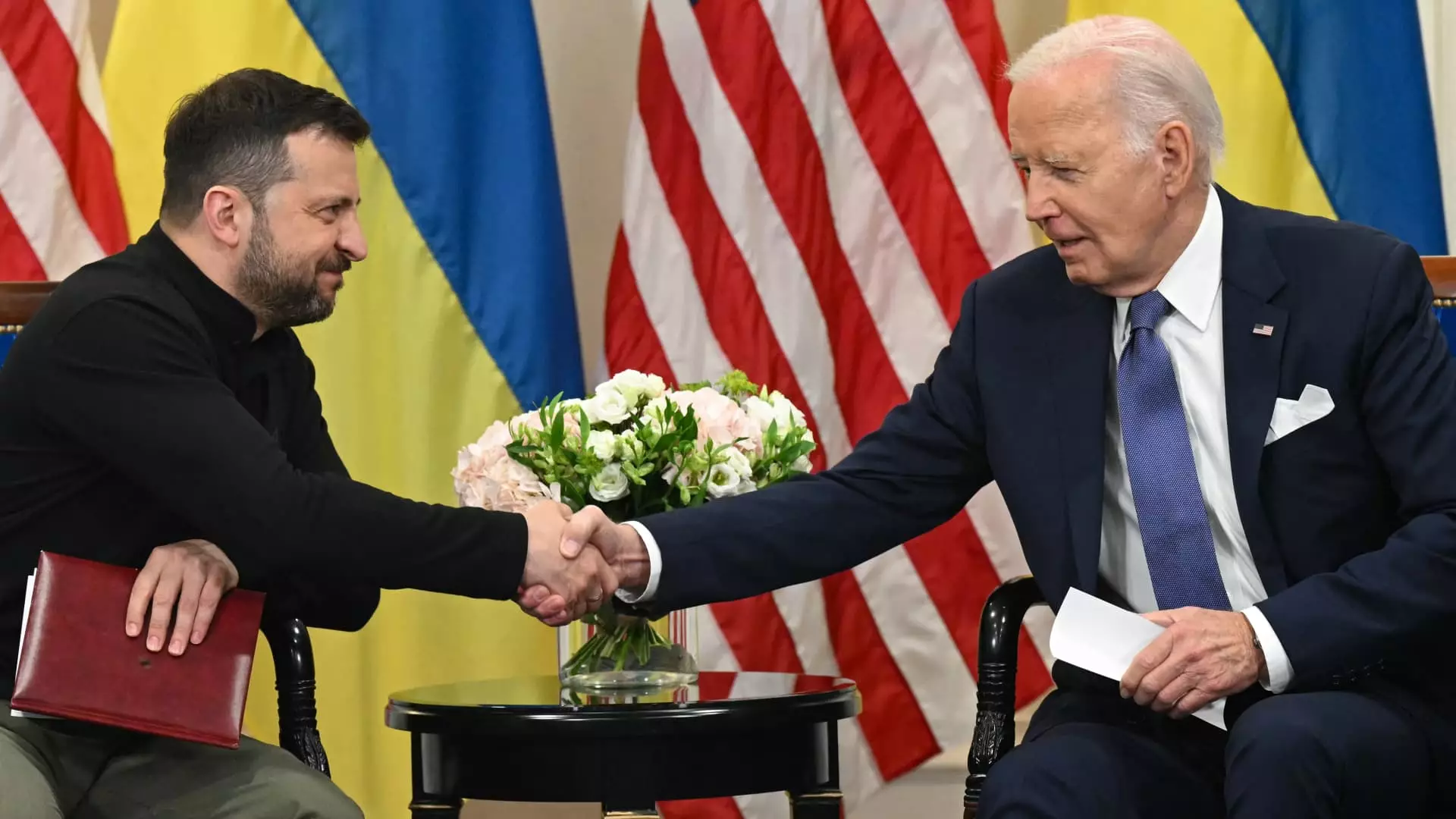The geopolitical landscape surrounding Ukraine is marked by complexity and urgency, especially as the United States navigates its foreign policy in the final weeks of President Joe Biden’s administration. The recent announcement regarding nearly $6 billion in military and budget assistance for Ukraine warrants a closer examination to understand the implications for both Ukraine and the U.S. moving forward, particularly in the context of an impending shift in leadership.
On a significant Monday, the Biden administration disclosed a comprehensive package of support for Ukraine amid ongoing hostilities with Russia. This assistance includes $2.5 billion in military aid and $3.4 billion in budgetary support. The military aid is segmented into two categories: a direct supply of $1.25 billion from existing U.S. stockpiles and a $1.22 billion package under the Ukraine Security Assistance Initiative (USAI). The latter represents a critical form of assistance that entails the procurement of military resources from defense contractors, which often leads to delays in delivery times and, consequently, a lag in battlefield readiness.
Treasury Secretary Janet Yellen emphasized that the budgetary component of the aid is pivotal for maintaining governmental functions in Ukraine, especially against the backdrop of a ramp-up in Russian offensives aimed at civilians and vital infrastructure. It is crucial to recognize that Ukraine’s financial stability correlates directly with its ability to sustain military efforts; budget support not only addresses immediate military needs but also ensures that basic government services continue functioning.
Biden’s commitment to bolster Ukraine’s defense capabilities during his remaining time in office underscores the strategic importance of Ukraine in U.S. foreign policy. The President stated his intent to work “relentlessly” to improve Ukraine’s standing in this prolonged conflict, highlighting a recognition of the challenging nature of modern warfare and the necessity for sustained support.
However, questions loom regarding whether this momentum can be maintained after Biden departs. The upcoming transition to President-elect Donald Trump raises concerns among analysts about the future trajectory of U.S. assistance to Ukraine. Trump’s prospective policies appear more isolationist, with suggestions that European allies should shoulder greater financial responsibility for Ukrainian aid. This shift in approach could lead to a significant realignment in how the U.S. engages with Ukraine, particularly if partisan divisions in Congress influence funding decisions.
Moreover, the dynamics on the ground are shifting, with recent reports indicating an infusion of North Korean troops into Russia’s military operations in Ukraine. The implications of this development cannot be understated; as reported, substantial losses among North Korean forces have been observed, revealing the high human cost of the ongoing conflict. These developments not only reflect Russia’s desperation but also signify the potential for increased international ramifications as North Korea finds itself more deeply enmeshed in a foreign conflict.
White House spokesperson John Kirby noted the considerable casualties faced by North Korean troops, prompting further scrutiny of how Russia’s strategies are evolving in light of increased resistance on the Ukrainian side. Biden’s recent assistance announcement includes provisions aimed at enhancing air defense and artillery systems to prepare Ukraine for the forthcoming winter season and potential military escalations.
Since the onset of the invasion in February 2022, the United States has allocated an impressive $175 billion toward various forms of assistance for Ukraine, illustrating a substantial commitment to its sovereignty and territorial integrity. However, recent indicators suggest a wavering among some congressional Republicans regarding the continuation of such support, potentially undermining the comprehensive strategy that has characterized U.S. involvement thus far.
Yellen’s emphatic declaration that “Ukraine’s success is in America’s core national interest” echoes a sentiment that is increasingly crucial as the conflict develops. The intersection of military aid, economic stability, and international diplomacy remains delicate, and any abrupt changes in support could have severe consequences for Ukraine’s defense posture and overall governmental resilience.
While the current aid package reflects a robust American commitment to Ukraine, the specter of a new administration raises crucial questions about the sustainability of such levels of support. The evolving situation not only reinforces the need for strategic adaptations but also calls for a reconsideration of how the international community can best support Ukraine through uncertain political landscapes.



Leave a Reply